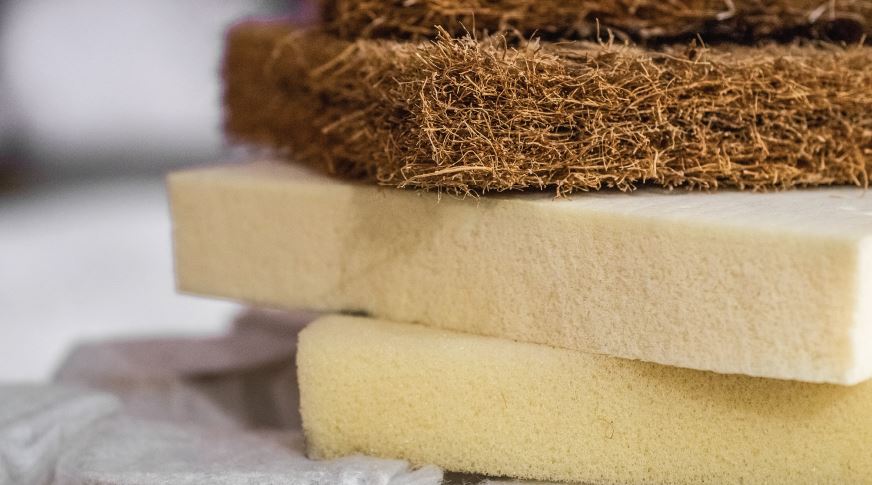The Indian mattress industry is in its growth phase with the efforts of mattress companies through their evolving business strategies and it is interesting to watch how the organized market players are giving their business strategies a serious push to compete against the unorganized local players. No matter, how effective the marketing campaigns or brand-building measures are, it all zeroes down to the product quality. Indian consumers are now willing to pay a good price for good quality mattresses and sleep products. To come up with better-quality sleep products, there is a need for increased investment in Research and Development (R&D) by mattress companies. R&D has been an integral part of the mattress industry. The industry has grown because of the required research initiatives taken up at various phases. In our last issue, we covered the various phases of the mattress industry. In the 1950s and 1960s, people were introduced to the idea of mattresses. During this period, the Indian mattress industry was largely characterized by the use of natural materials such as cotton, wool, and reed. Then, came the 1970s, when, Polyurethane (PU) foam made an entry into the Indian mattress market. The 1980s witnessed the growth of the modern mattress industry. In the 2000s, the Indian mattress industry had various types of mattresses, namely, PU foam, rubberized coir, spring mattresses, air beds, and water beds. And now after 2020, we have been witnessing the growth of the organized segment in the mattress industry.
The remarkable milestones achieved in the mattress industry could not have been possible without appropriate research and development. In every phase, mattress manufacturers realized the demerits of the existing sleep product and that triggered them to come up with something better. The shortcomings of one product made way for more research for the next product. The Indian mattress industry has gone through numerous phases of R&D by mattress companies to deliver acceptable mattress products.
Current state of R&D in the Indian mattress industry
To meet the growing consumer requirements, it is quintessential for mattress manufacturers to invest the required financial and intellectual resources for enhanced research and development. R&D activities are important for developing innovative sleep products that offer improved comfort, support, durability, and health benefits.
Through mattress companies well-structured R&D, the Indian mattress industry has been able to roll out mattresses and other sleep products with advanced materials and technologies. While the manufacturers have successfully launched memory foam, latex, polyurethane foam, and coir mattresses with better features for body support, pressure relief, and temperature regulation, they are also focussing on creating better value out of these materials and creating more sustainable products that will last longer.
R&D is not only restricted to the raw materials used in the production process. Manufacturers are researching more on better and more efficient manufacturing processes and ways to create customised mattresses. Each consumer’s need is different and hence, through customisation, mattress brands will be able to lure more customers towards their brand.“Our manufacturing facility has a testing laboratory with capabilities for temperature testing, pressure testing, and humidity mapping, among other things. A lot of our capital is invested in R&D at the product development stage. Leading with research and innovation, world-class machinery, and automation in the production process, we aim to provide innovative products at affordable prices to the ‘progressive yet practical’ audience of today. With our focus on backward-integrating our operations and setting up state-of-the-art mattress and furniture factories, we ensure that we keep a razor-sharp focus on R&D and innovation,” explains Ankit Garg, CEO and Co-founder, Wakefit.co.
In order to come up with better quality sleep products, there is need for increased investment on Research and Development (R&D).
There has been increased focus on every aspect of the mattress to suit the sleep requirements of most consumers. Manufacturers are not shying away from investing a substantial amount towards R&D. As Nirbhay Gupta, CEO of Coirfit Mattress explains, “Our dedicated R&D team works consistently to develop path-breaking innovations that enhance the comfort and quality of our sleep products. We invest a substantial amount in R&D to ensure that we offer the best mattresses to our customers. From inside material to outside fabric, our R&D analyses every minuscule aspect that goes into making a mattress. This is what allowed us to be pioneers and the first mattress brand in India to launch revolutionary products like Nano pocket mattress, Charcoal mattress, Grid mattress, Gold infused mattress and the list goes on.”
R&D efforts are being made by mattress companies to develop smart mattresses that incorporate technology like sensors, sleep trackers, and adjustable firmness settings. These mattresses should be equipped with the right technology to provide real-time feedback on sleep patterns, offer personalized sleep recommendations, and even adjust the mattress’s firmness and support based on individual preferences. The demand for smart mattresses is still in its initial phases but this demand will only hike with consumers willing to pay a higher price for it if it is equipped with better technology and other advanced raw materials. As explained by Archit Gupta, Managing Director of King Koil India, “It is important that when the price segment in most consumer durable industries goes up, then technology comes as a natural feature to support the price points. So using technology or high-quality quality technically advanced raw materials becomes important in high-price point products which has helped King Koil in its successful journey in the market. Demand in high price point mattress products has improved more than 30 percent post covid and customers are seen as more serious about their sleep and buying a good mattress.”

The Indian mattress industry has gone through numerous phases of R&D to deliver the acceptable mattress products.
Role of startups in steering R&D
Mattress companies startups have significant contributions towards steering innovation through increased research and development efforts. They have challenged the traditional ways of business in the mattress industry by bringing in fresh perspectives, innovative ideas, and disruptive technologies. Their R&D efforts also influenced the established players to start a new trend in the industry. They got some variety in the mattress industry by developing unique and niche products that cater to specific consumer needs, such as orthopaedic mattresses, eco-friendly mattresses, or mattresses for specific medical conditions. Innovative features like cooling technologies, customized sleep solutions, and smart mattresses with integrated sensors and tracking capabilities are now the latest trends in the Indian mattress industry due to some startups who thought ‘out of the box’.
The R&D efforts of mattress companies startups have pushed the boundaries of innovation as they did not shy away from collaborating with technology companies to bring technological advancements to their products. Meanwhile, they are pioneering environmentally friendly alternatives, such as organic cotton, bamboo, or natural latex that would last longer and suit the growing need for eco-friendly sleep products among consumers. Startups are also focused on leveraging the right technology in the manufacturing processes that would help them optimize supply chain management, reduce material wastage, and enhance production capacities. Their innovative manufacturing practices have enabled faster prototyping, more iterations, and faster market launches.
They have also worked on ways to understand their consumers’ pain points in a better way. Ankit Garg of Wakefit, the company that pioneered the ‘100-Day Buy and Try’ concept and roll-packing of mattresses, says, “We noticed that in the traditional mattress market, there was little to no innovation in the product that was being sold; it was highly overpriced, and the sales representatives of retail stores had no knowledge of the science of sleep. The lack of transparency and high markups on mattresses further fuelled our determination to offer a better alternative to consumers. Our customer-centric DNA and a keen eye on R&D and innovation enabled us to establish Wakefit.co as a leading player in the Indian D2C market.”
Startups in the Indian mattress industry have brought agility, disruption, and innovation to the R&D landscape. By challenging traditional norms, embracing sustainability, leveraging technology collaborations, and focusing on customer-centric solutions, startups have paved the way for the industry’s growth, setting new benchmarks for R&D in the mattress market in India.
Road ahead for R&D in mattress segment
R&D efforts and initiatives in the Indian mattress industry through newly incorporated mattress companies will continue to grow. Established mattress manufacturers and startups prioritise their R&D efforts to stay ahead in the competitive mattress market. Mattress companies will increasingly divert their resources towards researching advanced materials and technologies in mattress manufacturing. R&D spending is likely to increase due to
- Integration of technologies like artificial intelligence, machine learning, and the Internet of Things (IoT) into mattresses.
- Enhanced customization and personalization are suiting the individual requirements.
- Health-centric features to address sleep-related issues.
- Enhance the antimicrobial, hypoallergenic, and orthopaedic properties of mattresses.
- Sustainable and eco-friendly sleep solutions.
- Innovative designs and construction techniques that offer better support, pressure relief, and temperature regulation.
R&D is not only restricted to the raw materials used in production process. Manufacturers are researching more on better and efficient manufacturing processes and ways to create customised mattresses.
In the coming years, the Indian mattress industry will witness more collaborations and partnerships between mattress manufacturers, startups, technology companies, and research institutions. These partnerships will encourage more R&D efforts through shared knowledge, resources and funding. R&D activities in the mattress segment will largely be driven by consumer insights and feedback. Manufacturers will conduct thorough research, surveys, and user testing to gain a better understanding of consumer preferences and expectations.
It would be right to say, that future R&D will drive further innovation and advancement in the Indian mattress industry. With a focus on advanced materials, sustainability, customization, health-centric features, comfort, and consumer feedback, R&D will continue to drive growth and transformation in the industry.

